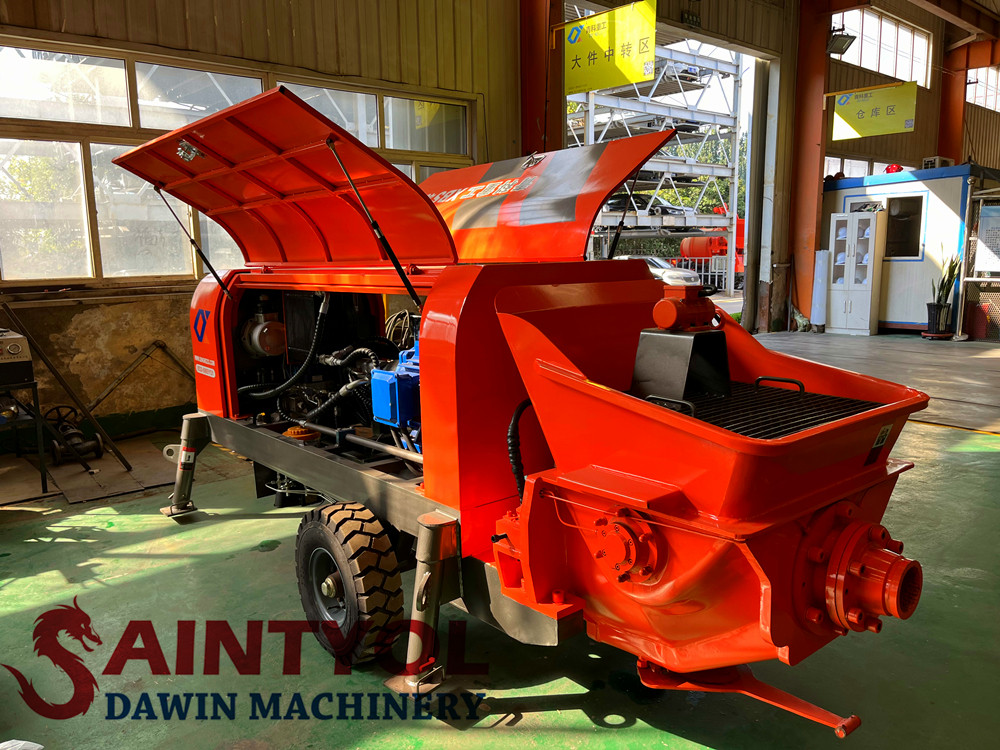Fine stone concrete pump - analysis of key points of use
sourceSaintyol DAWIN News Center
publisherJenny
time2022/11/25

- The fine stone concrete pump is a special concrete pump, which is welcomed by the majority of construction parties because it is widely used in floor heating projects and floor construction. So at the construction site, what are the pumping requirements for the fine stone concrete pump? Now let's take a closer look.
The fine stone concrete pump is a special concrete pump, which is welcomed by the majority of construction parties because it is widely used in floor heating projects and floor construction. So at the construction site, what are the pumping requirements for the fine stone concrete pump? Now let's take a closer look.
Experts pointed out that fine stone concrete pumps have been widely used in major construction units. If this kind of concrete pump is to be successfully constructed during construction, certain pumping requirements must be followed. For example, a screen should be installed on the pump hopper to isolate large rocks. The size of the screen should match the maximum particle size of the concrete aggregate. There is a special person to monitor, and once a large piece of material is found, it should be removed in time. Specifically, its pumping requirements can start from the following points
Preparation before pumping
Before pumping the fine stone concrete pump, attention should be paid to the concrete hydraulic gauge and the working status of each part. Generally, the outlet of the fine stone concrete pump is prone to blockage. In case of clogging, the pump should be reversed to allow the clogged concrete to flow back, and then pumped after it is evenly stirred. If nothing works, stop the pump and remove the blockage.

Points in pumping
During the pumping process, the concrete should ensure a continuous supply. If it cannot be fed continuously, the concrete pumping speed can be slowed down. In addition, when out of joint, the pump cannot stop working, but the concrete pump is allowed to rotate forward and reverse every 4-5 minutes to prevent the agglomeration or precipitation of the mixture in the pipeline. If the pumping stops for more than 45 minutes, It should be cleaned before re-pumping.
When pumping concrete, keep a certain amount of concrete in the hopper, which can prevent the air from entering the hopper, causing the concrete to flow backward and form a blockage. If this problem occurs, the pump needs to be reversed to make the concrete Return to the hopper and resume normal pumping when the air is out.
It is worth noting that during the pumping process, the water in the washing tank should be changed every 2 hours, and the stroke of the pump cylinder should be checked at the same time. If there is any change, it can be adjusted in time. In addition, in order to reduce uneven wear on the inner wall of the cylinder, it is best to start a long stroke. Pump concrete in short distances only at start-up and when concrete slump is low.
Vertical Pumping Essentials
When the concrete is conveyed vertically upwards, due to the water hammer, the concrete will produce countercurrent and the conveying efficiency will decrease. The higher the conveying pipe, the more obvious the phenomenon. In view of this problem, the correct solution is to set a horizontal pipe of more than 10 meters between the pump and the vertical pipe to offset the impact of the falling force of the concrete; and a stop valve should be added near the discharge port of the concrete pump.
In addition, when constructing at high temperature, attention should be paid to covering the horizontal conveying pipe with 2 layers of wet straw curtains to prevent sunlight, and spray water regularly to prevent pipe blockage.

